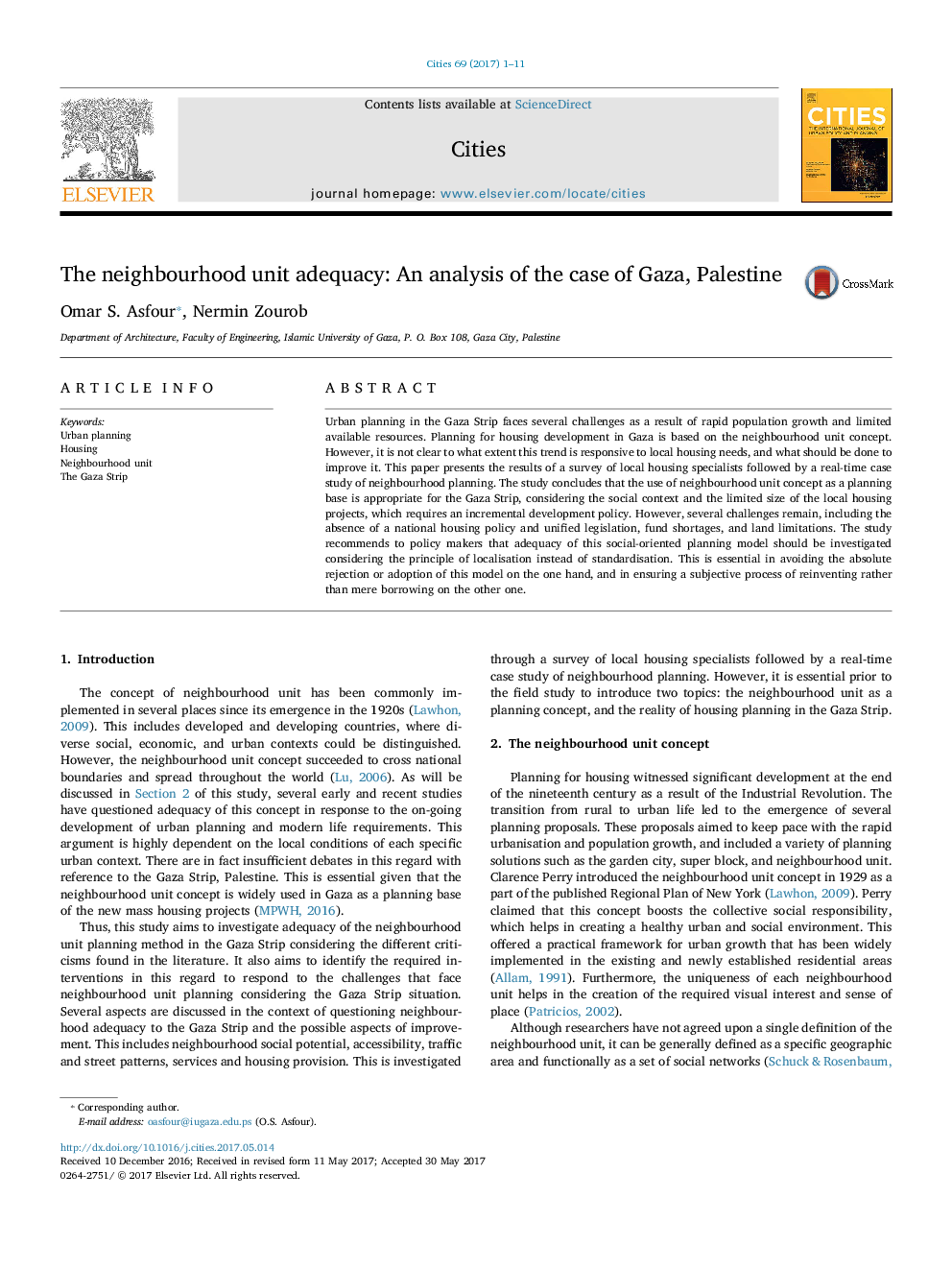ترجمه فارسی عنوان مقاله
کفایت محله: تجزیه و تحلیل مورد غزه، فلسطین
عنوان انگلیسی
The neighbourhood unit adequacy: An analysis of the case of Gaza, Palestine
| کد مقاله | سال انتشار | تعداد صفحات مقاله انگلیسی |
|---|---|---|
| 153872 | 2017 | 11 صفحه PDF |
منبع

Publisher : Elsevier - Science Direct (الزویر - ساینس دایرکت)
Journal : Cities, Volume 69, September 2017, Pages 1-11
ترجمه کلمات کلیدی
برنامه ریزی شهری، مسکن، واحد محله نوار غزه،
کلمات کلیدی انگلیسی
Urban planning; Housing; Neighbourhood unit; The Gaza Strip;
ترجمه چکیده
برنامه ریزی شهری در نوار غزه در نتیجه رشد سریع جمعیت و منابع موجود محدود، چندین چالش مواجه است. برنامه ریزی برای توسعه مسکن در غزه بر اساس مفهوم واحد محله است. با این حال مشخص نیست که این روند به نیازهای مسکن محلی واکنش نشان می دهد و برای بهبود آن چه باید کرد. این مقاله نتایج یک بررسی از متخصصان مسکن محلی را دنبال می کند و به دنبال آن یک مورد واقعی در مورد برنامه ریزی محله می باشد. این مطالعه نتیجه میگیرد که استفاده از مفهوم واحد محله به عنوان یک پایگاه برنامه ریزی برای نوار غزه مناسب است، با توجه به زمینه اجتماعی و اندازه محدود پروژه های محلی مسکن، که نیازمند یک سیاست توسعه بیشتر است. با این وجود، چالش های متعددی همچون عدم وجود یک سیاست مسکن ملی و یکپارچه سازی قانون، کمبود منابع مالی و محدودیت های زمین باقی می مانند. این مطالعه به سیاست گذاران توصیه می کند که کفایت این مدل برنامه ریزی اجتماعی گرا باید با توجه به اصل محلی سازی به جای استاندارد سازی مورد بررسی قرار گیرد. این امر برای جلوگیری از رد مطلق یا پذیرش این مدل از یک سو ضروری است و در حصول اطمینان از فرآیند ذهنی از نوآوری و نه صرفا قرض گرفتن از سوی دیگر.

